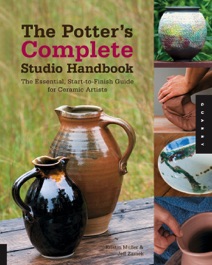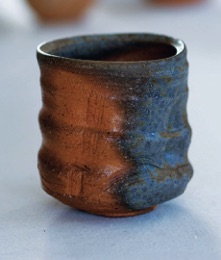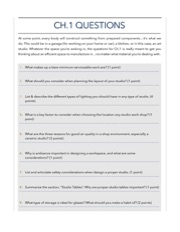“The Potter’s Complete Studio Handbook"
The Essential, Start-to-Finish Guide for Ceramic Artists
Kristen Müller & Jeff Zamek
Excerpt From: Kristin Müller & Jeff Zamek. “The Potter's Complete Studio Handbook.” iBooks
For years I have helped students discover the wonders of clay and answered their questions, wishing that I could give them all of my knowledge. My late father would often say, “My dear, unfortunately, experience is nontransferable.” Luckily, knowledge is. This book is a step in that direction. You will have to gain the experience that will enrich your technical knowledge through trial and error. It is a journey that is both challenging and satisfying.
Ceramics is a universe unto itself, with many options for clays, firing temperatures, physical and chemical considerations, and aesthetic choices. This book is designed to help aspiring ceramic artists who would like to understand some of the technical aspects of working with clay. It is by no means the definitive text. This book is, however, designed to help the ceramic enthusiast take the next step. It contains basic information about the entire process of working with clay, including the types of clay, the manipulation and formation of clay, basic studio procedures, firing procedures, and instructions on how to set up a safe and well-equipped home studio. This book also includes many projects that can be achieved as skills are sequentially refined.
THE INTIMACY OF POTTERY
Everyone has a favorite cup, though most people don’t really give it a second thought. Whether you drink coffee, tea, hot cocoa, or milk, when you reach into the cabinet full of assorted cups and mugs, you make a choice. The choice might be based on color, size, texture of the glaze, or sentimental value, but generally it will have more to do with the overall feeling of the cup. A cup is an intimate object that delivers nourishment to your body. I probably sold several hundred cups before it dawned on me that I was making and selling objects with the potential of so much intimacy. My favorite cup was made by Pete Callas, a wonderful ceramic artist known for his wood firing and powerful ceramic sculptures with whom I studied for years. It is wood-fired with no handles and deep throwing rings that spiral upward as if the cup were still rotating on the wheel. It fits perfectly in my hand. The surface is soft and smooth, but not glassy, because the only glaze it has is from the wood ash that melted on the surface during firing in an anagama kiln. The lip has a smooth, inverted-V shape that fits the shape of my mouth very comfortably when I take a drink. The wall thickness is perfect, and I know my coffee or tea is at the perfect drinking temperature when I can hold the cup without burning my fingers. When you make useful objects from clay, I hope some of your values and aesthetics will come through in the work. These preferences will define your creative efforts and develop your personal style.
THE SCIENCE OF POTTERY
In pottery, refining your technical skills is just as important as tapping into your creative well. Good work emerges when a balance of technical skill and personal vision merge successfully. This book is full of technical information that will help you understand how to shape clay into works of quality. Working with clay is a scientific craft. Clay’s utilitarian qualities—such as its durability and heat and water resistance—have helped advance society. People have used clay to create everything from religious artifacts, storage containers, and food serving utensils to modern plumbing, electrical transformers, parts for computer chips, space craft insulation materials, and replacement parts for the human body, some of the most inspiring expressions of human culture and intellect. Though clay is relatively easy to shape, it requires an understanding of chemical and physical changes to transform it through fire into a permanent rock-like hardness. Glazing and decorating delve into some basic chemistry that, when combined with good design, can render beautiful works of art. Most ceramic students have limited exposure to the scientific part of the ceramic process in a classroom environment. Teaching studios typically have one or two people in charge of mixing glazes and loading and firing kilns, and therefore students rarely learn those skills. The potter’s cycle includes shaping raw clay, bisque firing, glazing, then glaze-firing. Students form pieces in class then place them on a shelf to dry in preparation for its first firing. In most cases, a supply of glaze is provided and the bisque-firing is done by staff members. The bisque-fired work is glazed or decorated, then fired again, whence it is transformed into finished ceramic pieces. The student assesses the success or failure of the work and the cycle begins again.
“THE VERSATILITY OF CLAY
Clay is one of the few natural materials that can become nearly any shape desired. You can carve it, stamp it, pinch it, coil it, join it, turn it on a potter’s wheel, and pour or press it into molds. You can easily combine small sections of clay to make larger pieces. The size of a finished piece is limited only by the clay’s stability and by the size of the kiln you have available. (Some people even build special kilns around work that is too large or unwieldy for a typical kiln.)
“BUILDING YOUR FOUNDATION
After you read this book, I encourage you to take workshops and classes with different instructors, as well as to read other books and magazines on ceramics. These experiences will build upon the information that you will gain from this text and will show you alternative ways of working. All clay artists develop techniques that are honed for their own designs and choice of clays. You will see that as your clay skills build, you, too, will develop unique methods and your own style of working with clay. When I teach, students often ask me if they are “doing it right.” My response is, “If it works, it’s probably right.” There will always be better ways to render a technique, but you will find them by watching others work and through personal experience. Use this book as a guide and learn to trust the process and your instincts. Know that a fine craftsman is someone who has strong basic skills. The true craftsman is always honing the basics so that his or her use of tools and materials becomes second nature. “The stronger the skills and knowledge base, the more focused one can be on the creative details of design and execution.
My hope is that this handbook will reside in your studio, not on a pristine shelf in the living room, and that it will be used as a primer and reference guide. The goal is for you to learn the basic skills to further your knowledge of the ceramic process in an accessible, non-intimidating way. Some sections of this book will seem technical. Know that you do not need to memorize the information, but you should know where to find it when you need it. Information is power! It will give you confidence to move forward with your work. The informed artist can make better decisions about process to strengthen aesthetic, expression, and functionality. Read on and enjoy!


Wood-fired cup by Peter Callas
Chapter Questions
Click on the thumbnails below to go to the specific chapter & questions
Ch. 1
Ch. 2
Ch. 5
Ch. 10
Other Chapters
Click on the chaptes below if you wish to read on for your own interest. There are NO questions to these chapters



